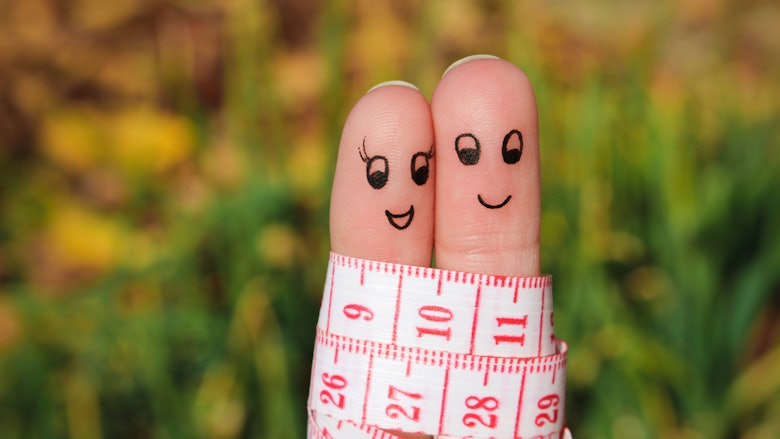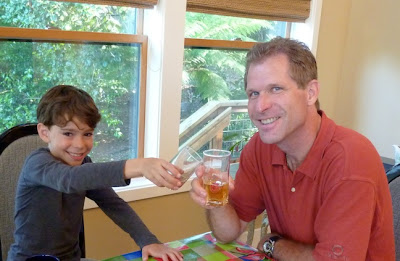 |
| Two reasons this may work for Batman, even if it does not work for you: (1) Hes probably D-ficient, (2) Bats are closer related to rodents than men ;-) |
If someone speaks of "apoptosis" thats a funky way of telling you that the cell he is talking about has bitten the dust. If I am telling you that the HED, i.e. the human equivalent dosage of ~10.000 IU vitamin D3 (10x more than officially suggested) and a diet containing 120% of the rodent equivalent of the recommended 800-1,000mg of calcium per day led to an increase in adipocyte apoptosis, this is thus only a funky way to tell you that vitamin D and calcium
in conjunction can do what diets usually dont to: They can
kill, not just empty, fat cells.
Usually, when youre losing weight, the fat cells shrink, but they remain in place. If adding some extra "D" and "Ca" on top of your energy reduced diet could make sure that the fat cells actually vanish, this would thus be extremely good news!
You can learn more about vitamin D at the SuppVersity

How Much To Take?

Leucine, Insulin & Vitamin D

Vit. D Speeds Up Recovery

Overlooked D-Sources

Vitamin D For Athletes!

Vitamin D Helps Store Fat
The increased propensity to assimilate triglycerides of previously emptied fat cells that is after thought to be one of the reasons a dieters weight jojos back up in not time.
Aside from the fact that not all things that work beautifully in rodents are going to work in humans, as well, there are certain additional caveats that make me doubt that its just their own stupidity that the ten-thousands of people who are already taking vitamin D and calcium at 10,000IU and 800-1,000mg per day, respectively, are not yet ripped to the shreds.
- Firstly, we cannot be sure whether the simple human equivalent dose (HED) calculations apply in this context (learn how to calculate HEDs).
- Secondly, the whole "fat cell apoptosis" thing would be useless if it would occur only in concert with an overall increase in obesity, which is what the scientists in the study at hand have necessarily been observing in their diet-induced obese mice on high fat diets.
I guess now that you are all aware of my the fact that you cannot expect to get ripped overnight by taking a couple vitamin and mineral pills, we can take a closer look at the study outcomes - without the risk that someone starts to poison him-/herself with tons of vitamin D and calcium by tomorrow.
 |
| Figure 1: Effects of supplementation regimen on diet-induced blood glucose excursions & body fat levels (Sergeev. 2014) |
Even if it worked, as you can see in
Figure 1, the mice were still fat - not as fat as the mice on the high fat diet without either calcium or vitamin D, but still significantly fatter than those on the control diet. Against that background, the significant improvements in glucose control may eventually be the more important result of the study at hand. If those, at least, could be observed in human studies that would be awesome!
 |
| Vitamin D does not help w/ glucose control in non-deficient individuals |
Improved glucose metabolism in vitamin D sufficient individuals? Awesome, but unrealistic! As a diligent
SuppVersity Reader you will know it. Unless youre deficient, the provision of extra vitamin D in the diet is
not going to affect your glucose metabolism at all (see "Non-Carbohydrate Nutrients And Their Effects On Blood Glucose Management ➲ Vitamin D - The Sunshine Vitamin" | read article) and for calcium things dont look much different (read more).
As Ive explained in the red box above, we can be almost sure this is
not going to happen, though. So lets be honest: How realistic is it to assume that the Ca 2+ -mediated apoptosis in adipose tissue the scientists from the
South Dakota State University observed in their rodent study will not just occur in normal human beings, but also be significant enough to acitvate the Ca 2+ /calpain/caspase-dependent pathway of cellular apoptosis in fat cells to a degree that would produce similarly pronounced decreases in weight gain... ah, and yeah - who on earth wants to "gain less weight"?
The goal should obviously be to stay or get down to a normal weight, not to ameliorate the damage youre doing to yourselves on a daily basis by eating what some people call a "diet", in the "standard American" fashion (dont get me wrong, the SGD, i.e. Standard German Diet, does not only look pretty much like the US one, its also about as sickening unhealthy).
 |
| Will calcium help stabilize your blood sugar levels? Learn more in a previous SuppVersity article! |
Bottom line: For the above reasons I am highly skeptical of the scientists conclusion that targeting Ca 2+ /calpain/caspase-dependent pathway of cellular apoptosis vitamin D and calcium supplementation "can represent an effective and affordable approach to the prevention and treatment of obesity". How many post-menopausal women got obese on (albeit usually lower-dosed) vitamin D + calcium regimen? How many people do you know who have been taking 10,000IU/day of D3, when the vitamin D hype climaxed while getting plenty of calcium from their diet who lost body fat? None?
Well, me neither and thats why I think the most important think to remember about this study is that youd better be skeptical when someone else cites it to convince you that vitamin D3 and calcium were "slimming aids", "fat burners" or whatnot.
References:
- Sergeev, Igor N., and Qingming Song. "High vitamin D and calcium intakes reduce diet‐induced obesity in mice by increasing adipose tissue apoptosis." Molecular nutrition & food research (2014).



















































